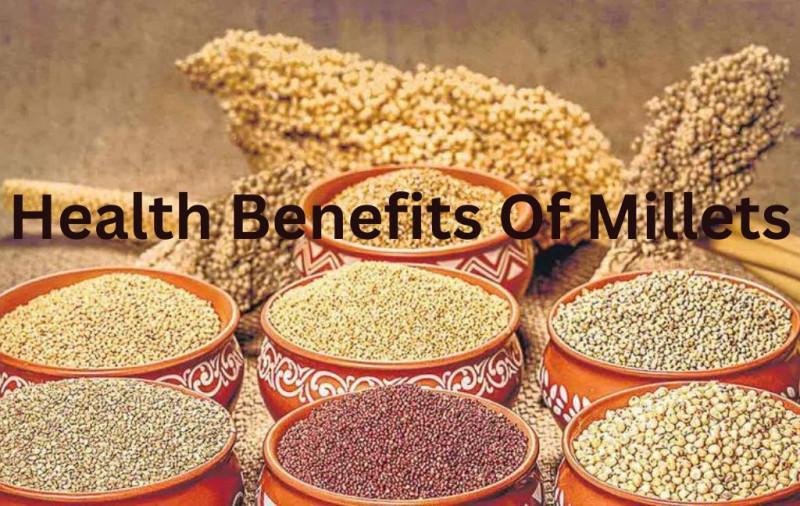Source: https://ravenreign.livejournal.com/505.html
Millets are some of the oldest foods known to humankind. But what exactly are millets? Millets are a highly diverse group of small-seeded cereal grains that belong to the Poaceae grass family. Most millets belong to the Paniceae. These ancient grains have been cultivated for thousands of years in various parts of the world for their health benefits for both fodder and human food. Their charred grains have been found at Harappan sites, and they were also mentioned in the Vedas, one of the oldest archaeological and literary sources of the Indian subcontinent.
Millets are important crops in the semi-arid tropics of Asia and Africa, particularly in India, Mali, Nigeria, and Niger, with 97% of production occurring in developing countries. These crops are favored for their productivity and short growing season under hot, dry conditions.
Millets are broadly categorized into two categories based on the size of their grains: major millets (sorghum, pearl millet, and finger millet) and minor millets (foxtail millet, kodo millet, barnyard millet, little millet, and proso millet). Additionally, there are pseudo millets, namely amaranth and buckwheat. Although they are not part of the Poaceae botanical family encompassing “true” grains, they offer similar nutritional benefits. Each type has its unique nutritional value and uses. Highly nutritious and versatile, millets are an essential part of many traditional diets or weight loss programs.

Health Benefits Of Millets
Let’s now explore various health benefits of millets.
High Nutritional Value
Millets are starchy grains that are naturally rich in carbohydrates and proteins with all essential amino acids and low in fat. Most of the fat in millet is polyunsaturated, with some monounsaturated and saturated fat. Millets have essential nutrients, including vitamins and minerals, guarding us against many vitamin and mineral diseases.
Promotes Digestive Health
They are high in dietary fiber aka roughage, both soluble and insoluble, which improves the digestive system function. It combats constipation, flatulence, bloating, cramping, regularizes the bowel movements and improves the overall health of other vital organs like liver, kidney and boosts the immune system. The insoluble fiber is a prebiotic, which means it supports good bacteria in your gut. The fiber adds bulk to stool, promoting regularity and reducing colon cancer risk.
Keeps Your Blood Sugar Levels Low
Millets regulate blood glucose levels as it has a low Glycaemic Index (GI), making them an ideal food for people with diabetes.
Gluten Free
They are gluten-free and easy to digest, making them an excellent alternative for people with celiac disease or gluten sensitivity.
Reduces Cardiovascular Risks
Millets are rich in antioxidants that include beta-glucans, flavonoids, anthocyanins, saponins, tannins, policosanols, and lignans. They play a crucial role in lowering Low-Density Lipoprotein (LDL) cholesterol aka “bad” cholesterol, total cholesterol and helps to maintain the blood vessels healthy and clears off the clots, thereby lowering the risk of heart disease and stroke.
Aids in Weight Loss
They are a boon for all weight watchers who want to shed those extra kilos. Including millets in the regular regimen like millet flour or having millet for breakfast can remarkably help in lowering the BMI of obese people. Swapping rice with millets daily can lower accumulation of fat, improves gut health and helps in achieving sustained weight loss.
Rich In Niacin
Millets like pearl millet, kodo millet, and finger millet are rich in niacin, also known as Vitamin B3, which is good for healthy skin, blood, and organs, and is involved in over 400 enzyme reactions.
Boost Immunity
Millets, especially dark colored grains, contain beta-carotene, a plant pigment that our body converts into Vitamin A (retinol). It helps fight free radicals and support the immune system.
Environment Friendly
Millets are famed as “poor man’s food grain” due to its affordability. They are drought resistant and pest resistant crops that survive in harsh climate and less fertile soil. They require less water than other cereal crops like rice, wheat, making them an ideal crop of regions with limited water resources. Millet cultivation helps to reduce the carbon footprint.
Conclusion
Millets are not only good for health but also for the environment due to their sustainable cultivation practices. It offers a smarter and healthy nutrition option. Millets are considered superfoods, surpassing wheat and rice in many aspects. And they are not bland in taste anymore. Millets are now being made into fluffy bread, gooey porridges, hot khichdi, idlis, dosas and even delicious desserts.
Year 2023 is declared as the “International Year of Millets” by the UN at the initiative of the Indian government. So, celebrate the International Year of Millets every year and incorporate the health benefits of millets into your daily life to improve your health.
